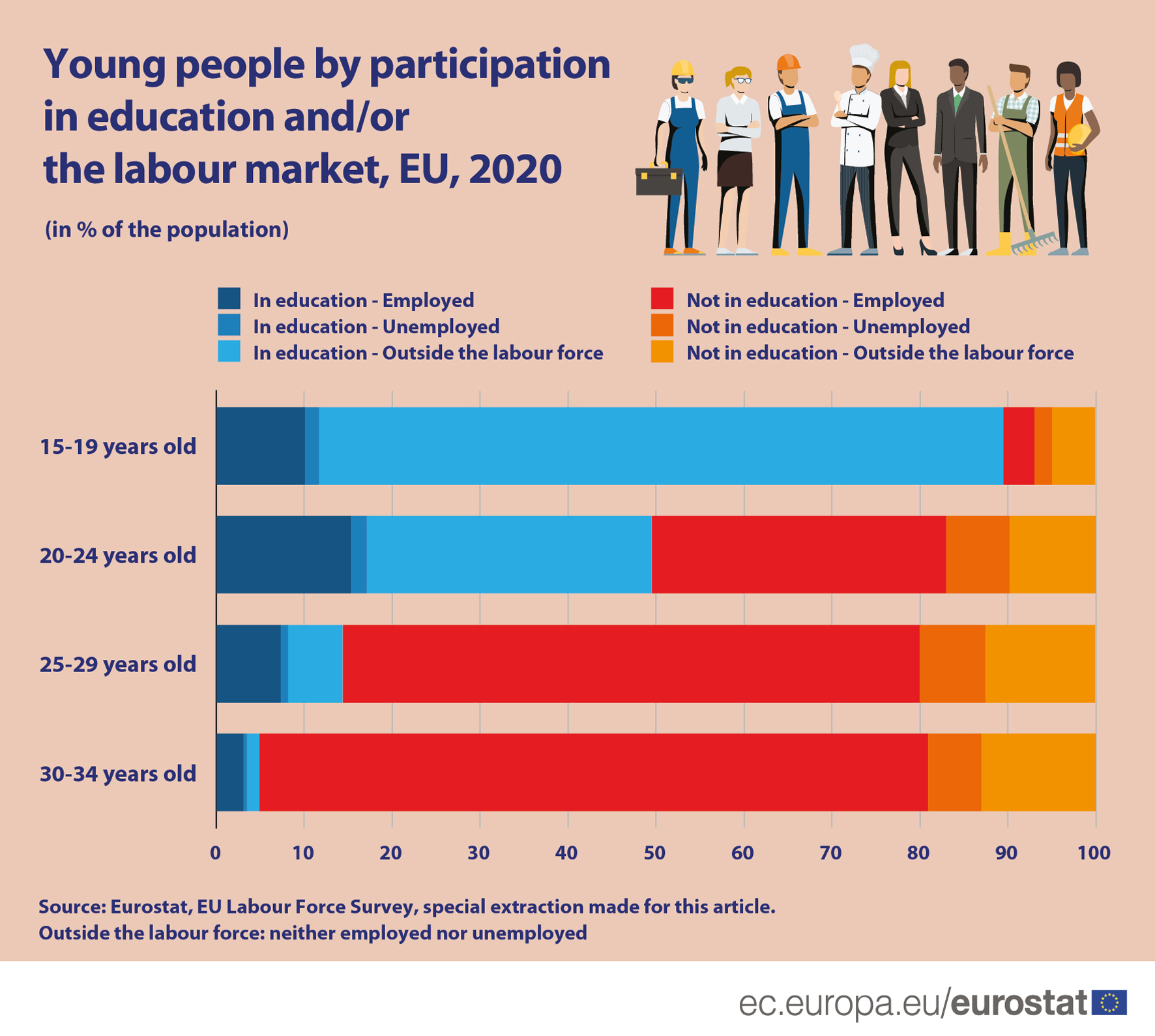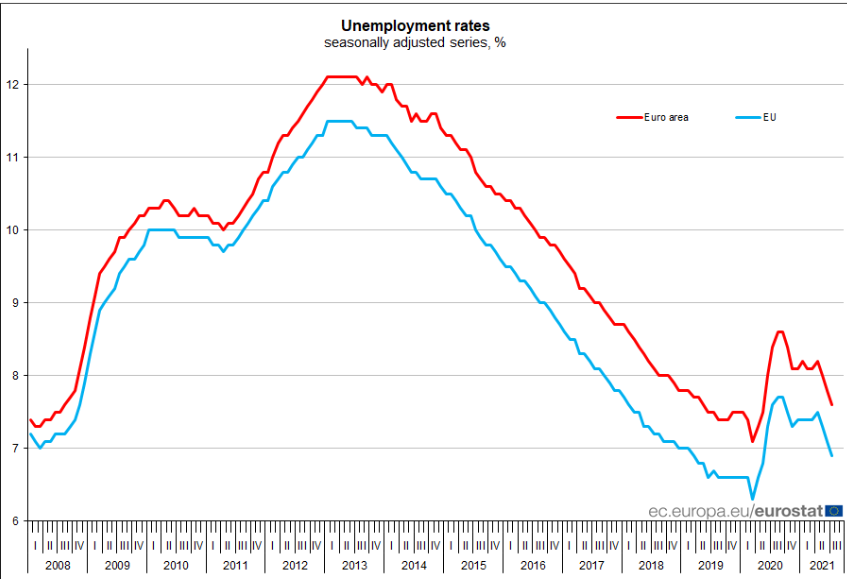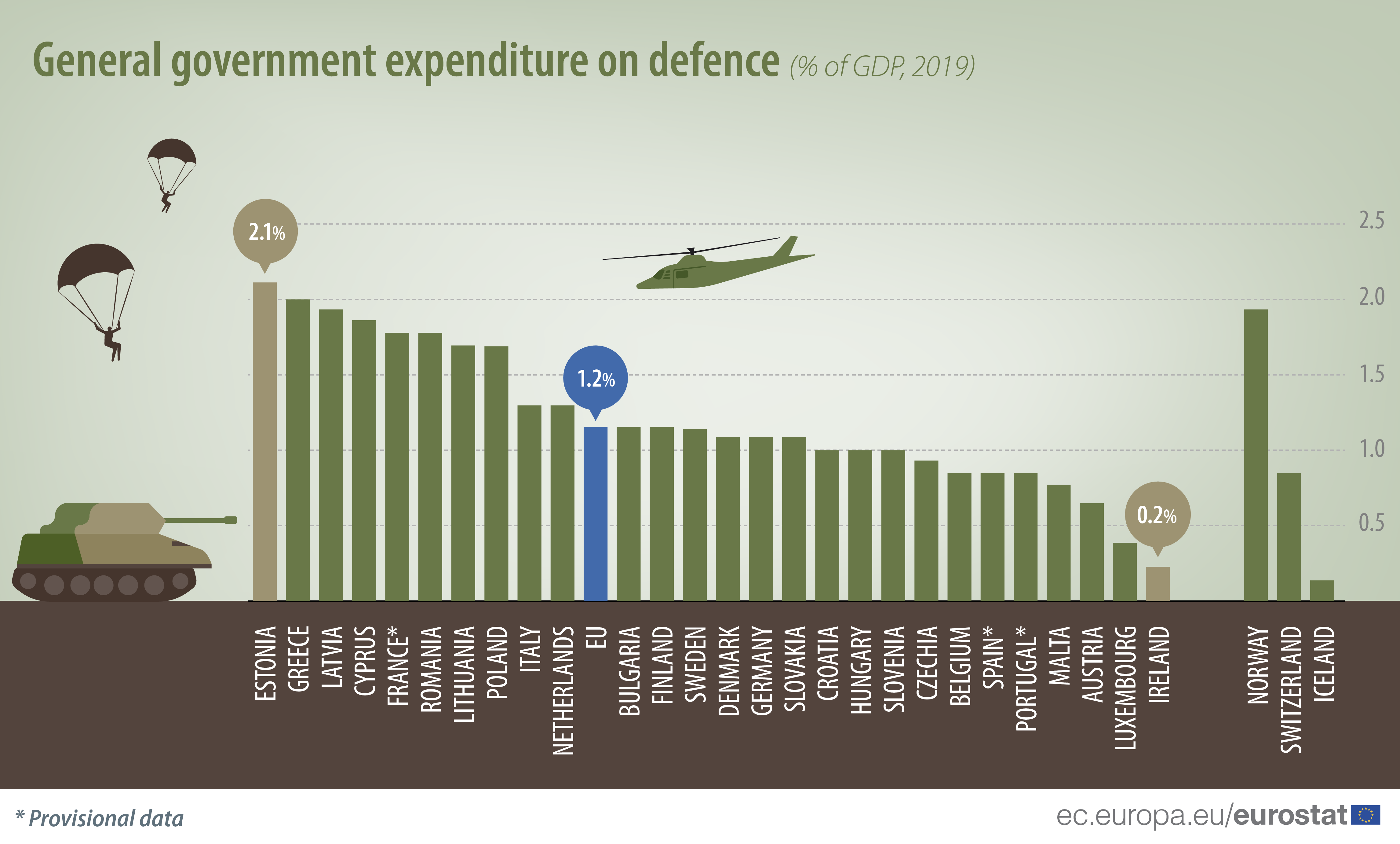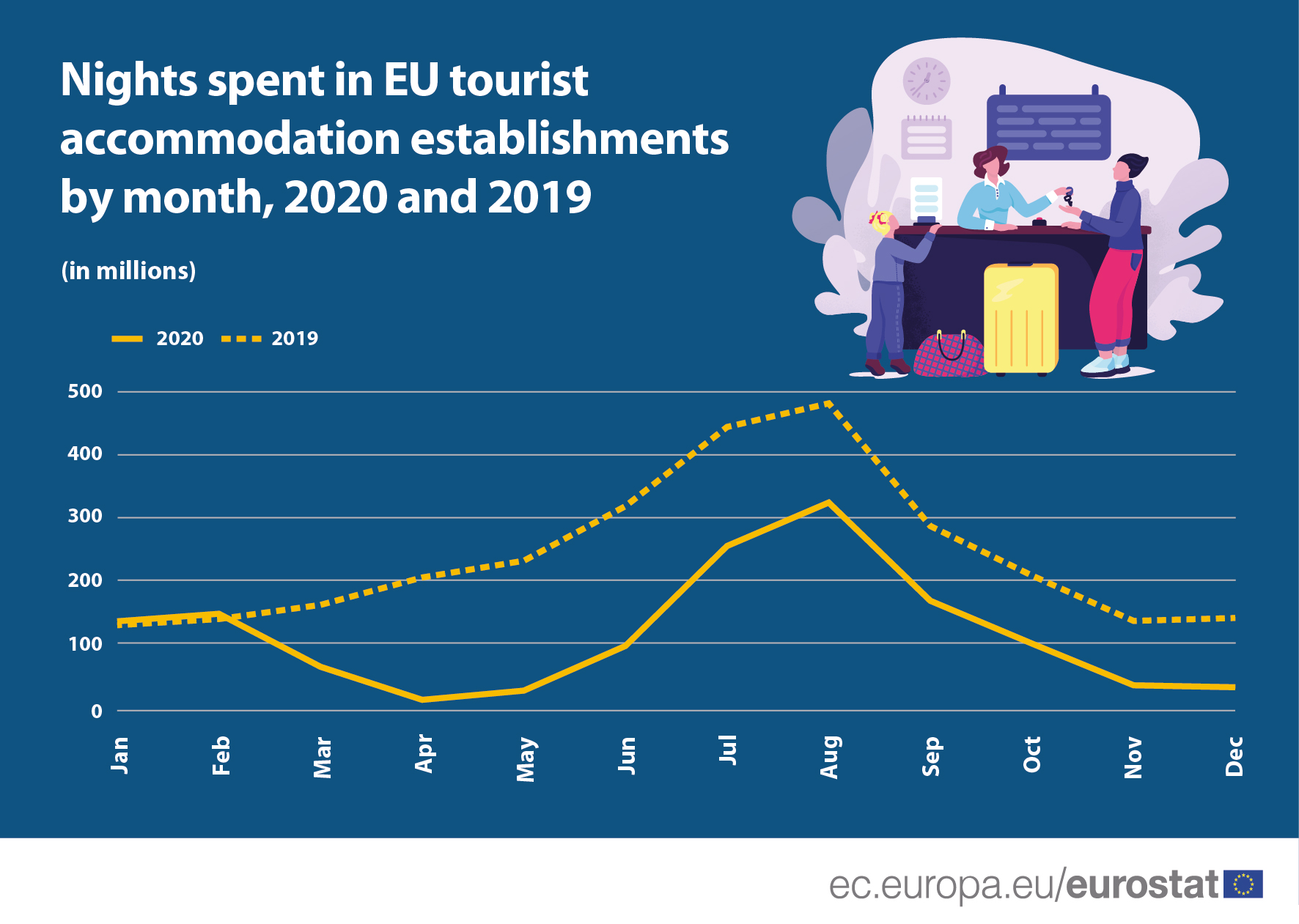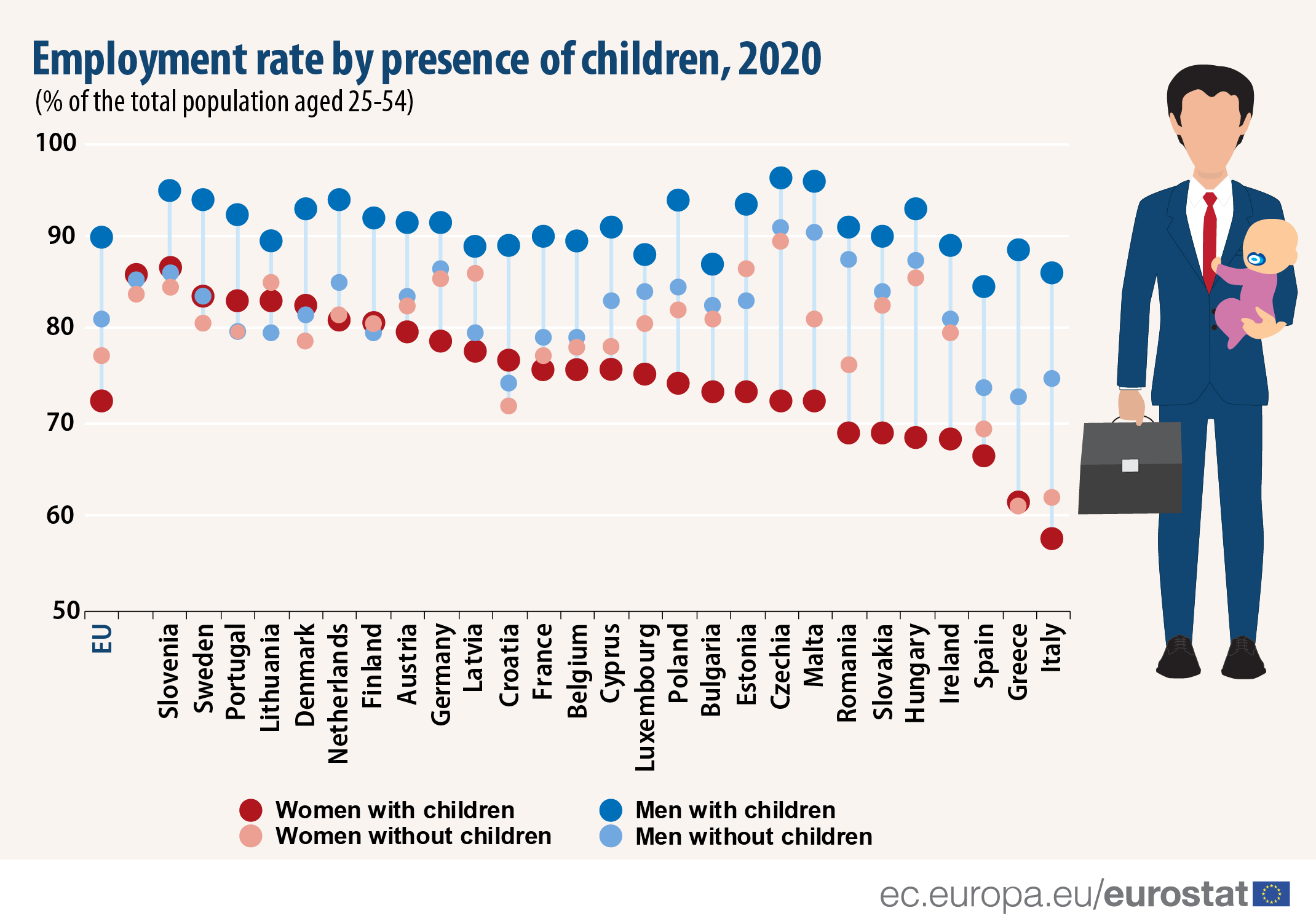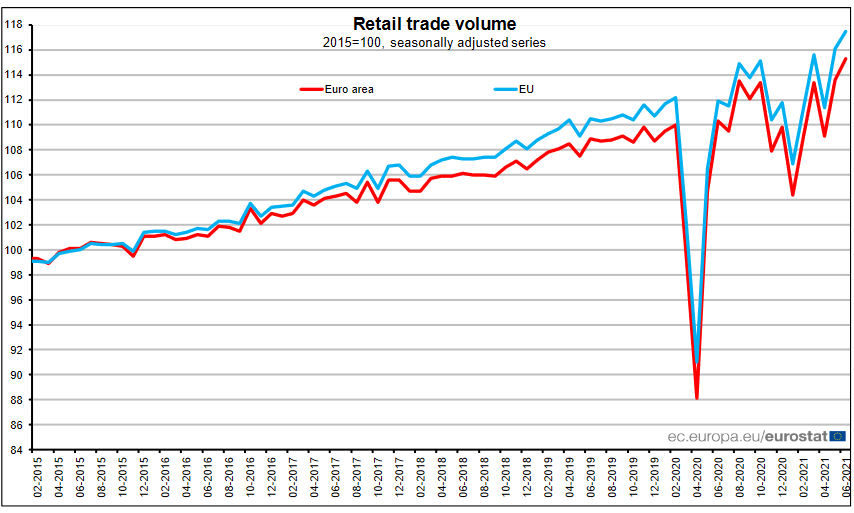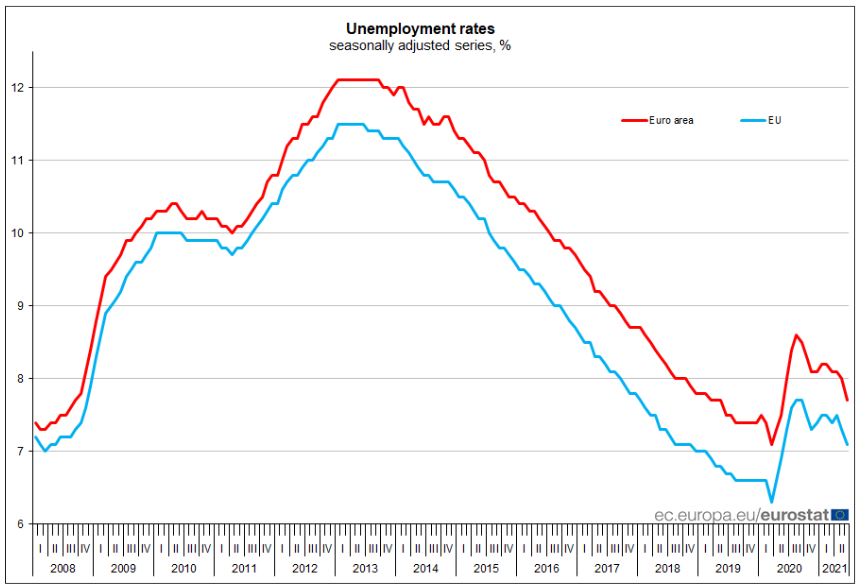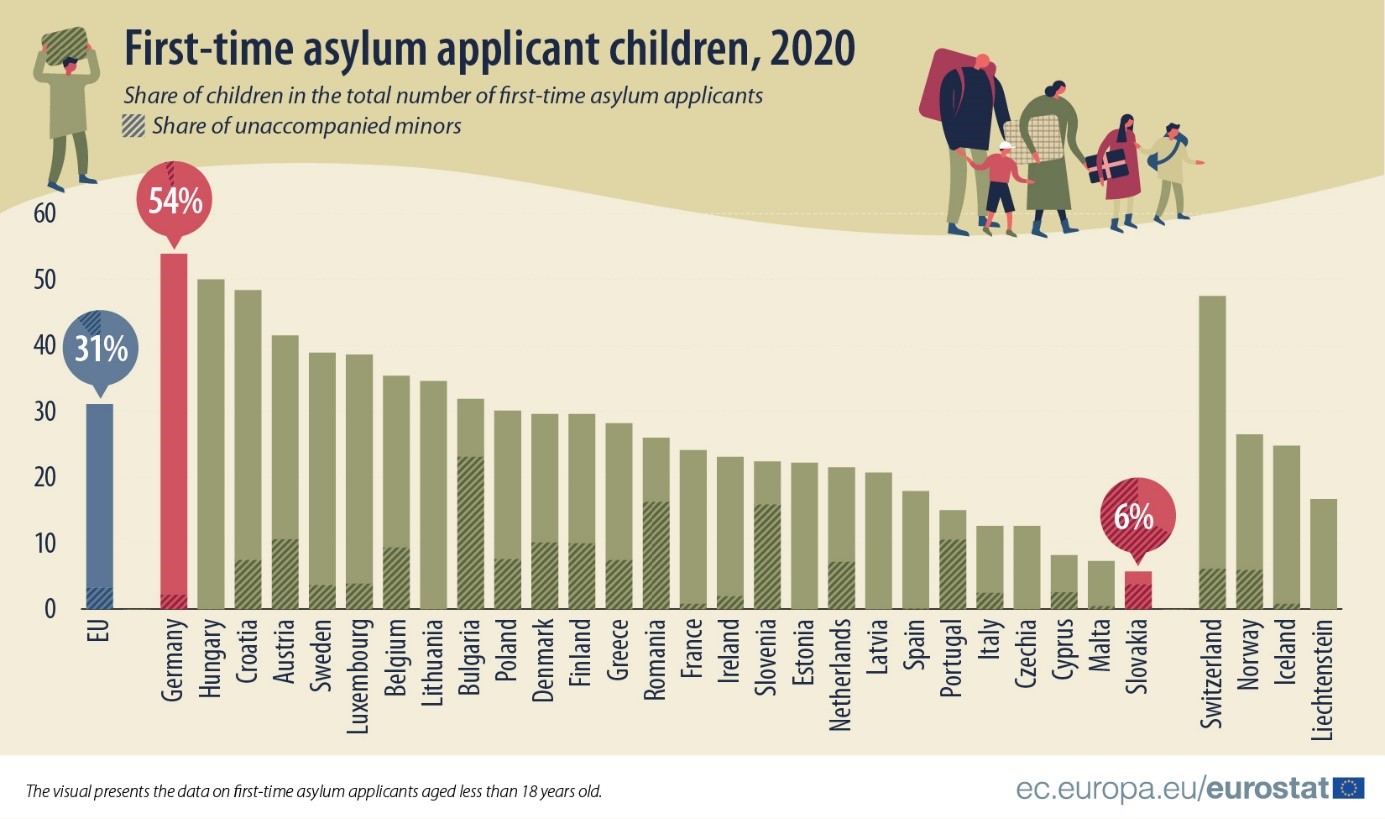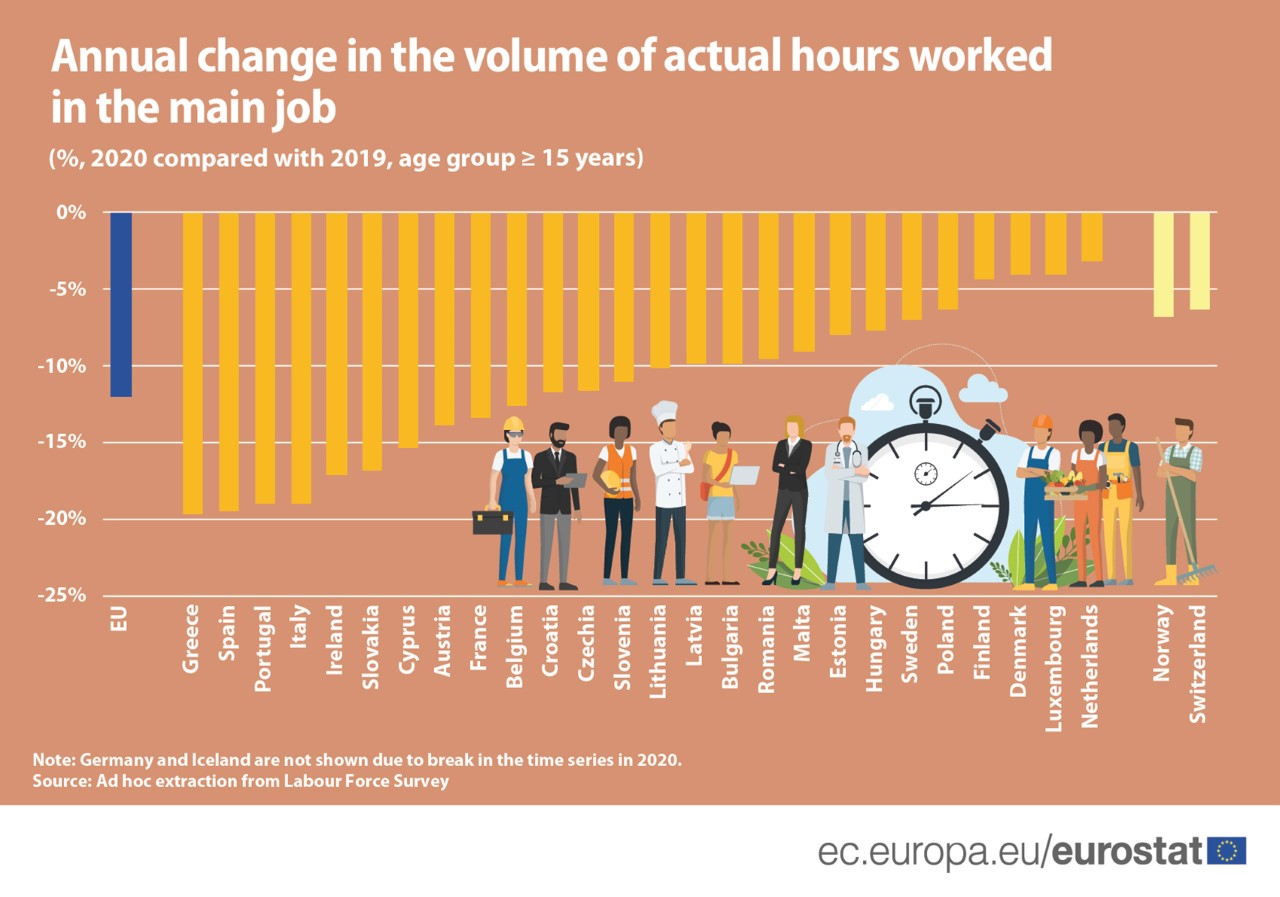In 2020, in the EU, 9 in 10 people aged 15-19 years were still in education (89.5%).
Statistics
In July 2021, the euro area seasonally-adjusted unemployment rate was 7.6%, down from 7.8% in June 2021 and from 8.4% in July 2020. The EU unemployment rate was 6.9% in July 2021, dow
In 2019, the EU Member States’ general government expenditure on defence amounted to €168.5 billion, representing 2.6% of total general government expenditure.
In 2020, the tourism industry suffered from the COVID-19 outbreak: the number of nights spent at EU tourist accommodation establishments dropped by 52% in 2020 compared with 2019.
The presence of children in the household affects the employment rate of men and women differently, 2020 data shows.
In June 2021, the seasonally adjusted volume of retail trade rose by 1.5% in the euro area and by 1.2% the EU, compared with May 2021.
In 2020, the EU produced over 2.9 billion litres of ice cream, representing a 9% decline from the previous year.
In June 2021, the euro area seasonally-adjusted unemployment rate was 7.7%, down from 8.0% in May 2021 and from 8.0% in June 2020.
In 2020, 129.630 children (persons under 18 years old) lodged a first-time application for asylum in the EU which corresponds to 31% of the total number of first-time asylum applications recorded i
In 2020, the number of actual hours worked in the main job in the EU decreased by 12.0% when compared with 2019.
